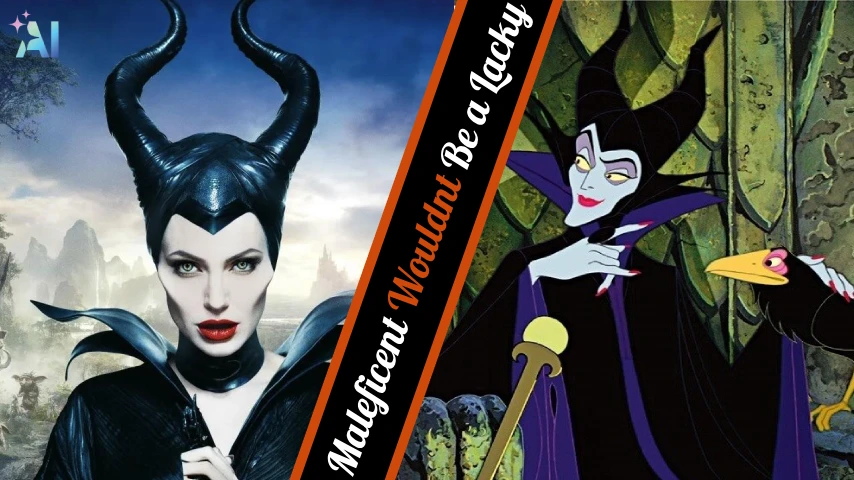Maleficent Wouldnt Be a Lacky. Maleficent stands as the most powerful fairy in existence, refusing to bow to anyone’s will. Her story isn’t just about being a villain – it’s about maintaining independence and power against all odds. Let’s dive into why this dark fairy would never serve as anyone’s subordinate.
Origins of Power
The Moors thrived under Maleficent’s protection, a realm where magical creatures lived freely without royal rule. Her innate magical abilities emerged naturally, setting her apart from other fairies. While most fairies stuck to simple nature magic, Maleficent’s powers grew to command both light and shadow.
Her connection to the Moors runs deeper than mere guardianship. She understands every creature, plant, and magical essence within her domain. This intimate bond with nature strengthens her resolve to protect her homeland independently.
Through her early years, she developed a fierce sense of autonomy. Unlike other magical beings who sought alliances with humans, Maleficent maintained the Moors’ independence through her own strength.
Command and Authority
| Leadership Aspect | Manifestation |
|---|---|
| Rule Style | Independent sovereignty |
| Power Base | Natural magic and fear |
| Territory | The Moors |
Maleficent’s authority stems from personal power rather than borrowed strength. She commands respect through demonstration rather than demands, showing both wisdom and might in protecting her realm.
Her leadership style evolved from protective guardian to sovereign ruler. Yet even as queen, she never relied on others to enforce her will. Every decree, every magical protection came directly from her own power.
Early Portrayal
In Disney’s 1959 animated classic “Sleeping Beauty,” Maleficent emerged as the quintessential villain, commanding fear and respect through her calculated actions and unwavering determination. This initial portrayal, while simplified, laid the groundwork for a character who would never bow to others’ authority. The 2014 live-action adaptation expanded her story significantly, revealing the deep emotional wounds and betrayals that shaped her character.
Psychological Complexity
Maleficent’s psychological depth stems from her experiences of betrayal and loss. The violation of her trust by Stefan, who stole her wings, catalyzed her transformation from a protective fairy to a more complex figure. This trauma, rather than diminishing her, strengthened her resolve to maintain independence and control over her destiny.
Power and Authority
Magical Prowess
Maleficent’s command over powerful magic serves as a direct expression of her autonomy. Her abilities aren’t merely tools but manifestations of her independent will. From commanding the elements to transforming into a fearsome dragon, her magical capabilities reinforce her position as a sovereign power rather than a subordinate.
Leadership Style
As the guardian of the Moors, Maleficent demonstrates natural leadership qualities that set her apart. She commands respect through strength rather than fear alone, inspiring loyalty even from those who might question her methods. Her dominion over the Moors showcases her ability to rule independently, refusing to submit to external authority.
Motivations and Actions
Personal Agency
Every action Maleficent takes stems from her own decisions and motivations. Whether protecting the Moors or seeking vengeance, she operates according to her own moral compass. Her curse on Aurora, while initially driven by revenge, demonstrates her power to act independently of societal expectations or constraints.
Moral Complexity
The depth of Maleficent’s character lies in her ability to evolve beyond simple villainy. Her journey from protector to antagonist and back again reveals a complex moral framework that defies simple categorization. This complexity reinforces why she could never be reduced to a mere follower – her actions always serve her own understanding of justice and righteousness.
Symbolism and Themes
Female Empowerment
Maleficent represents a powerful symbol of feminine strength and autonomy. Her story challenges traditional gender roles and power structures, demonstrating that female characters can wield significant influence without subordinating themselves to patriarchal authority. She embodies resistance against traditional power hierarchies, refusing to be diminished or controlled.
Independence and Autonomy
The core of Maleficent’s character lies in her unwavering commitment to independence. Her wings symbolize not just physical freedom but spiritual and emotional autonomy. Even when physically wounded, she maintains her sovereign spirit, refusing to submit to external control or manipulation
Character Transformation
Maleficent’s journey from benevolent fairy to feared sorceress and eventually to complex anti-hero demonstrates remarkable character evolution. This transformation never compromises her fundamental independence – instead, each phase of her development reinforces her autonomy and power. Her ability to forge her own path, even in the face of betrayal and loss, cements her position as a character who could never be subordinate to another’s will.
Personal Transformation
Stefan’s betrayal marked a turning point, transforming her from a trusting protector into a more complex figure. Yet even in darkness, she never became subservient to hatred or revenge.
The loss of her wings didn’t diminish her independence. Instead, it strengthened her resolve to stand alone. She adapted, using Diaval as her eyes in the sky while maintaining complete autonomy in her decisions.
Through her relationship with Aurora, Maleficent discovered new aspects of her power. This bond showed that independence doesn’t mean isolation – it means choosing one’s own path and companions.
Sovereign Choices
Maleficent’s decisions always remained her own. When she cursed Aurora, it came from personal choice, not outside influence. Even when she later regretted this action, she faced the consequences on her own terms.
Her relationship with Diaval exemplifies her approach to allies. While he served as her companion, she never treated him as a mere servant. Their partnership was built on mutual respect rather than subservience.
Modern Evolution
Recent developments show Maleficent’s continuing independence. Angelina Jolie’s confirmation to return for a third film in late 2024 suggests further exploration of the character’s autonomous nature.
The character maintains her sovereign status across multiple adaptations. Each version reinforces her position as a power in her own right, never bowing to external control.
Natural Sovereignty
The return of Maleficent’s wings symbolizes more than physical restoration – it represents her complete independence. These wings embody her freedom to choose her own path and maintain her sovereignty.
Her connection to nature reflects her independent spirit. Like the wild forces she commands, Maleficent refuses to be tamed or controlled by others.
Conclusion
Maleficent’s refusal to be a lackey defines her character. From her origins as a powerful fairy to her evolution as a complex protagonist, she maintains her independence through every challenge and transformation. Her story continues to demonstrate that true power comes from maintaining one’s autonomy while choosing when and how to connect with others.






fabuloso este conteúdo. Gostei muito. Aproveitem e vejam este site. informações, novidades e muito mais. Não deixem de acessar para aprender mais. Obrigado a todos e até a próxima. 🙂